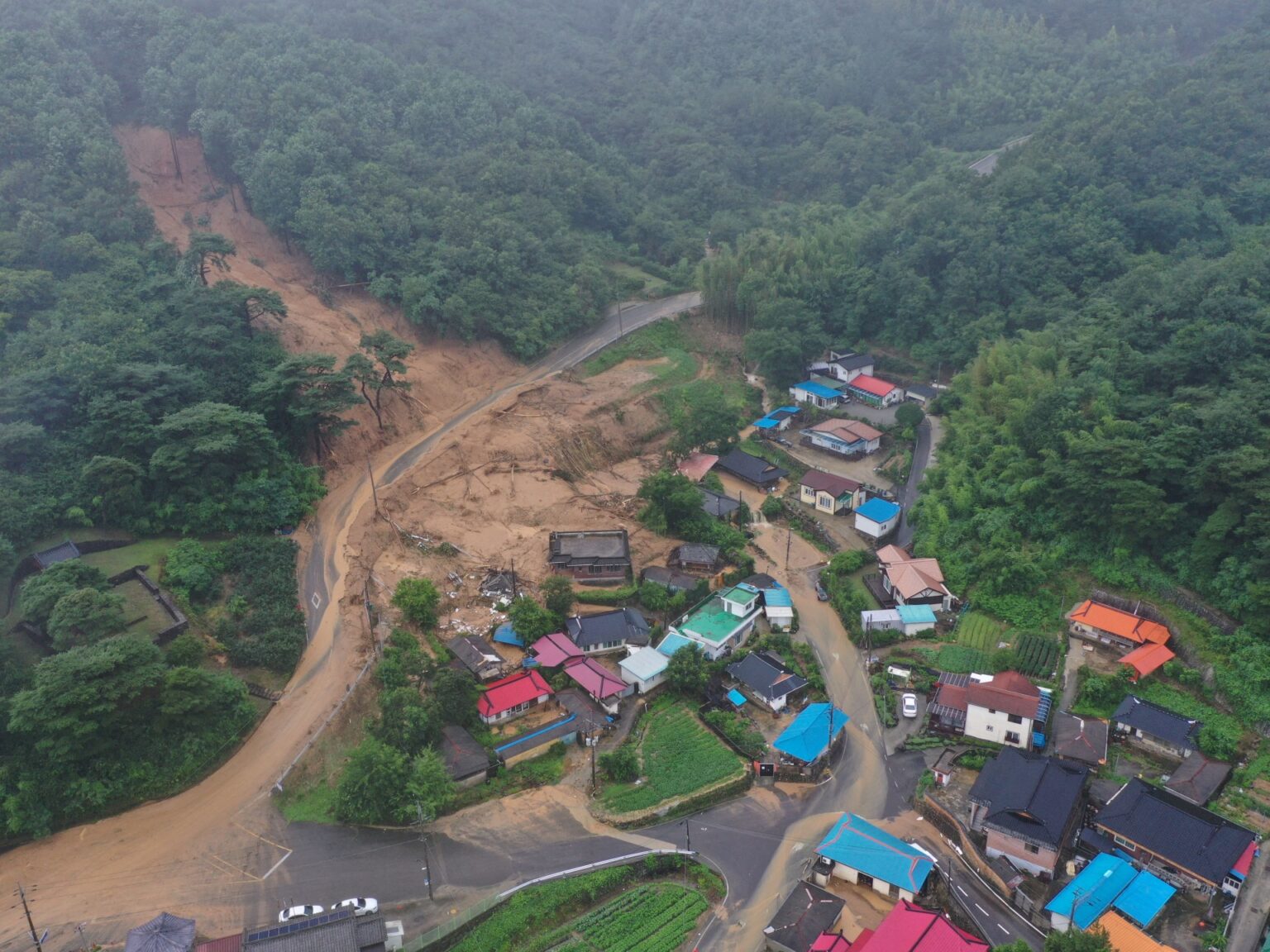Five-day deluge unleashed flash floods and landslides that killed 18 and left nine others missing, authorities say.
Torrential rains that lashed South Korea have killed at least 18 people and left nine others missing, authorities said, as the government lifted advisories for heavy rain and the meteorological agency warned of a return of heatwaves to southern parts of the country.
The toll on Monday came as South Korea’s military also announced dispatching thousands of troops to rain-ravaged areas to assist in recovery efforts.
The downpours began on July 16 and brought some of the heaviest hourly rainfall on record to some of South Korea’s central and southern provinces. The five-day deluge collapsed homes, triggered landslides and unleashed flash floods that swept away cars and campers.
At least 10 people were killed in the southern county of Sancheong, and four others remain missing there, according to the Ministry of the Interior and Safety.
Another person was killed when their house collapsed in the town of Gapyeong, northeast of the capital, Seoul, while a man who had been camping near a stream there was found dead after being swept away by rapid currents.
The man’s wife and teenage son remain missing, the South Korean JoongAng Daily reported. Two others, including a man in his 70s who had been buried in a landslide, were listed as missing in the same town.
The rains also forced some 14,166 people to evacuate their homes in 15 cities and provinces, and caused “extensive property damage”, the Yonhap news agency reported.
The agency said 1,999 cases of damage had been recorded at public facilities, and 2,238 cases were recorded at private homes and buildings.
South Korea’s military said it has dispatched some 2,500 personnel to the southwestern city of Gwangju as well as the South Chungcheong and South Gyeongsang provinces to assist in the recovery efforts.
The troops will be overhauling homes and stores affected by the rains, it said.
Hannah June Kim, an associate professor in the Graduate School of International Studies at Sogang University in Seoul, told Al Jazeera that “a lot of people were taken off guard” because monsoonal rains came later than expected this year.
“The expectation was that monsoons would not be appearing during this summer,” she said. “So, when this heavy rain started to fall this past week, a lot of local areas were unprepared.”
“We are seeing the heavy effects of climate change and how it’s affecting different areas,” she added.
South Korea’s Meteorological Administration (KMA) forecast more rainfall in the southern regions on Monday but said that a heatwave would follow. According to the JoongAng Daily, heatwave advisories and warnings have already been issued for parts of South Jeolla, the east coast of Gangwon and Jeju Island.
“From July 24 onward, morning lows will remain between 23 and 26 degrees Celsius [73.4F to 78.8F], and daytime highs will range from 30 to 35 degrees Celsius [86F to 95F], higher than the seasonal averages of 22 to 25 degrees Celsius [71.6F to 77F] in the morning and 29 to 33 degrees Celsius [84.2F to 91.4F] during the day,” it reported, citing the KMA.
Scientists say climate change has made extreme weather events more frequent and intense around the world.
In 2022, South Korea endured record-breaking rains and flooding, which killed at least 11 people.
They included three people who died trapped in a Seoul basement apartment of the kind that became internationally known because of the Oscar-winning Korean film Parasite.
The government said at the time that the rainfall was the heaviest since records began, blaming climate change for the extreme weather.
https://www.aljazeera.com/news/2025/7/21/toll-from-s-korea-rains-rises-to-18-as-weather-agency-warns-of-heatwaves?traffic_source=rss


